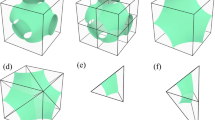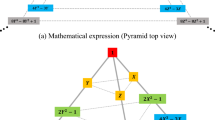Abstract
Limitation of resources and interest in having economical designs lead to consider nonlinear behavior of materials in analysis and design of structures. During the last decade, the isogeometric analysis (IGA) is proposed and applied to achieve nonlinear analysis of various types of structures. Exact modeling of geometry and high accuracy in approximating unknown displacement field are amongst the advantages of this method. In this research, beside developing isogeometric elasto-plastic analysis formulation by considering von Mises criterion, a comparative study is achieved to investigate effects of using different modeling parameters such as number of control points and different knot spans. A convergence study is also achieved by increasing the number of discretizing control points throughout the domain. In addition, effect of strain hardening parameter is investigated when the isogeometric analysis is used. To demonstrate the accuracy of the method, the results are compared with analytical solutions as well as the finite element method (FEM). To achieve this, several numerical examples are presented.














Similar content being viewed by others
References
Bazilevs, Y., Beirao Da Veiga, L., Cottrell, J. A., Hughes, T. J. R., & Sangalli, G. (2006). Isogeometric analysis: approximation, stability and error estimates for h-refined meshes. Mathematical Models and Methods in Applied Sciences, 16, 1031–1090.
Beer, G., Marussig, B., Zechner, J., Dunser, C., & Fries, T. P. (2016). Isogeometric boundary element analysis with elasto-plastic inclusions, Part 1: Plane problems. Computer Methods in Applied Mechanics and Engineering, 308, 552–570.
Chakrabarty, J. (2006). Theory of plasticity (3rd ed.). Oxford: Elsevier Butterworth-Heinemann.
Cottrell, J. A., Reali, A., Bazilevs, Y., & Hughes, T. J. R. (2006). Isogeometric analysis of structural vibrations. Computer Methods in Applied Mechanics and Engineering, 195, 5257–5296.
Elguedj, T., Bazilevs, Y., Calo, V. M., & Hughes, T. J. R. (2007). B and F− projection methods for nearly incompressible linear and nonlinear elasticity and plasticity using higher-order NURBS elements. Computer Methods in Applied Mechanics and Engineering, 197, 2732–2762.
Ferreira JP. Parente M. Jorge RN. Elasto-plastic analysis of structures using an Isogeometric formulation, Congress on Numerical Methods in Engineering, Lisbon, Portugal, June 29 to July 02, 2015.
Foster, A. S. J., Gardner, L., & Wang, Y. (2015). Practical strain-hardening material properties for use in deformation-based structural steel design. Thin-walled structures, 92, 115–129.
Hu, F., Shi, G., & Shi, Y. (2016). Constitutive model for full-range elasto-plastic behavior of structural steels with yield plateau: Calibration and validation. Engineering Structures, 118, 210–227.
Hughes, T. J. R., Cottrell, J. A., & Bazilevs, Y. (2005). Isogeometric analysis: CAD, finite elements, NURBS, exact geometry and mesh refinement. Computer Methods in Applied Mechanics and Engineering, 194, 4135–4195.
Hughes, T. J. R., Reali, A., & Sangalli, G. (2010). Efficient quadrature for NURBS-based isogeometric analysis. Computer Methods in Applied Mechanics and Engineering, 199, 301–313.
Kim, N. H. (2014). Introduction to nonlinear finite element analysis (1st ed.). New York: Springer.
Lubliner, J. (1990). Plasticity theory. New York: Macmillan.
Mathisen, K. M., Okstad, K. M., Kvamsdal, T., & Raknes, S. B. (2011). Isogeometric analysis of finite deformation nearly incompressible solids. Journal of Structural Mechanics, 44, 260–278.
Moharrami, H., Mahini, M. R., & Cocchetti, G. (2015). Elastoplastic analysis of plane stress/strain structures via restricted basis linear programming. Computers & Structures, 146, 1–11.
Neto, E. A. S., Peric, D., & Owen, D. R. J. (2008). Computatinal methods for plasticity: Theory and applications (1st ed.). Hoboken: Wiley.
Owen, D. R. J., & Hinton, E. (1980). Finite elements in plasticity: Theory and practice (1st ed.). Swansea: Pineridge Press.
Piegl, L., & Tiller, W. (1995). The NURBS book (2nd ed.). Germany: Springer.
Sadd, M. H. (2009). Elasticity: Theory, application and numerics (2nd ed.). Burlington: Academic Press.
Stok, B., & Halilovic, M. (2009). Analytical solutions in elasto-plastic bending of beams with rectangular cross section. Applied Mathematical Modelling, 33, 1749–1760.
Vrouwenvelder, A. (2003). The plastic behavior and the calculation of beams and frames subjected to bending. The Netherlands: Delft.
Author information
Authors and Affiliations
Corresponding author
Rights and permissions
About this article
Cite this article
Kazemi, H.S., Tavakkoli, S.M. ON the performance of isogeometric analysis for elasto-plastic plane stress problems. Asian J Civ Eng 19, 55–65 (2018). https://doi.org/10.1007/s42107-018-0007-6
Received:
Accepted:
Published:
Issue Date:
DOI: https://doi.org/10.1007/s42107-018-0007-6




